Whitehot Magazine
November 2025
"The Best Art In The World"
"The Best Art In The World"
November 2025
Art in the City of Brotherly Love: A Contemporary Moment in Philadelphia
 Miguel Antonio Horn, ContraFuerte, 2021, 8 figures, aluminum plating. Alleyway at 12th & Cuthbert Streets, Philadelphia, Pennsylvania.
Miguel Antonio Horn, ContraFuerte, 2021, 8 figures, aluminum plating. Alleyway at 12th & Cuthbert Streets, Philadelphia, Pennsylvania.
By LIAM OTERO November 17th, 2025
I recently embarked on a multi-day press tour of the Philadelphia art scene that was organized by the city’s tourist agency, Visit Philly. During this brief window of time, Visit Philly masterfully curated a thorough itinerary revealing a broad range of creative strides, innovations, and projects underway across the city. The sumptuous programming I was treated to was more than enough to demonstrate that change is afoot in the City of Brotherly Love - for the better.
I confess, prior to this trip, I had some hesitations given the amount of press that had been directed at the city in response to a slew of recent incidents over the last few years: the shuttering of such esteemed institutions like The University of the Arts; the segued denouement of the prestigious Pennsylvania Academy of the Fine Arts; and the heavily contested name change for the former Philadelphia Museum of Art (now the Philadelphia Art Museum). Nevertheless, I have many takeaways that will explicate precisely how, despite certain setbacks over the years, Philly possesses a dogged resilience and optimistically realistic progressivism. Such an attitude ensures not only the maintenance of its already entrenched cultural stratosphere, but concurrently its growing stature as one of the prime urban art capitals of the Eastern Seaboard.
Museums
To my New York readers, Benjamin Franklin Parkway is Philly’s equivalent of Museum Mile along Fifth Avenue. The stretch of institutions along its route is an impressive range of cultural heritage that is impossible to cover in a single day.
 Marcel Duchamp (French-American, 1887 - 1968), Étant donnés (Given: 1. The Waterfall, 2. The Illuminating Gas, French: Étant donnés: 1° la chute d'eau / 2° le gaz d'éclairage), 1946 - 1966, mixed media assemblage. From The Duchamp Galleries at The Philadelphia Art Museum.
Marcel Duchamp (French-American, 1887 - 1968), Étant donnés (Given: 1. The Waterfall, 2. The Illuminating Gas, French: Étant donnés: 1° la chute d'eau / 2° le gaz d'éclairage), 1946 - 1966, mixed media assemblage. From The Duchamp Galleries at The Philadelphia Art Museum.
The Philadelphia Art Museum (PHAM) has an exciting roster of current and future programming underway. Brand X Editions: Innovation in Screenprinting is a terrific overview of more than 400 screenprints from the archives of the titular printmaking studio that include Chuck Close’s self-portraits, Rashid Johnson’s repeating wave motifs, and Joel Mesler’s tongue-in-cheek satirical images, among dozens of other famous artists. PHAM possesses one of the most comprehensive collections of Duchamp’s works, thereby making it a pilgrimage destination for Dada enthusiasts; additionally, PHAM is in the process of co-organizing a major Duchamp exhibition set to open at New York’s Museum of Modern Art next April, which will be a rare opportunity to see his works in a new light and space.
A Nation of Artists is an upcoming exhibition for Spring 2026 that will highlight over 1000 artworks from the Middleton Family Collection, one of the finest and most diverse collections of American art. As the museum’s curatorial complement to America’s 250th anniversary, this exhibition will take a strong focus on diversity in the history of American art spanning pre-colonial Indigenous culture, to colonial settlement, the Hudson River School, and all the way up to 1950s Abstract Expressionism; within this narrative, the longstanding generational connections between art and immigration will be emphasized.
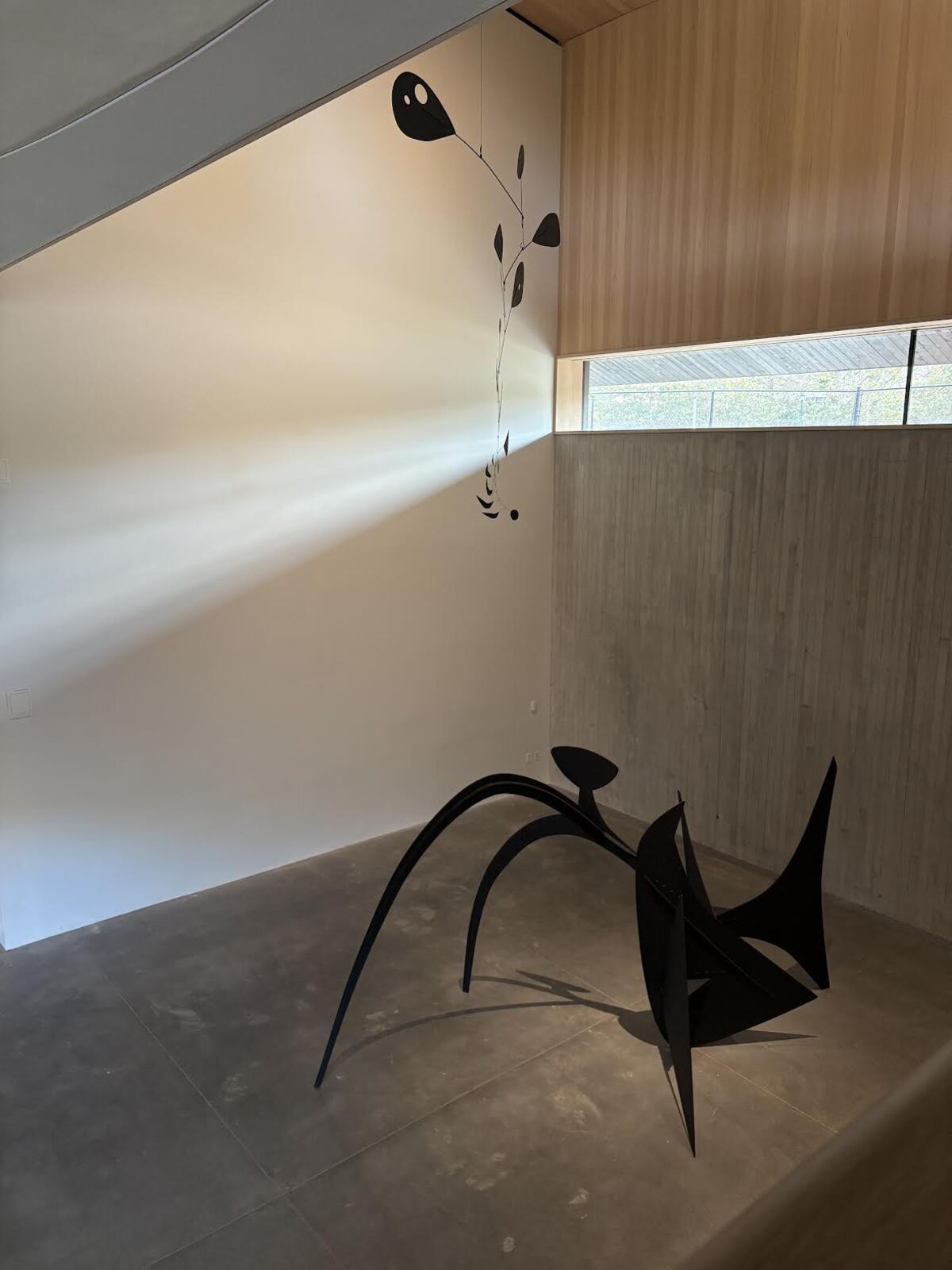 Interior view of The Calder Gardens.
Interior view of The Calder Gardens.
On September 21st, a brand new destination opened to the public: The Calder Gardens. Though not a museum per se, this site operates more as a sculpture garden in which works by Alexander Calder (American, 1898 - 1976) are situated in and around an amorphously cavernous, multi-tiered building designed by the world-class architectural firm Herzog & de Meuron. Calder’s colorfully playful sculptures that exude an energetic thrust naturally jive with the open-air layouts, ample fenestration, and choreographed landscaping. The beauty of such a space lies in its variable conditions determined by the natural lighting and weather - such moments can become a delightful unity of Calder’s kineticism with that of a James Turrell-inspired Light & Space ethos.
The Institute of Contemporary Art, an art museum affiliated with University of Pennsylvania, is currently the site of a landmark, first-time survey show of the Jamaican-born abstract painter, printmaker, and fashion designer Mavis Pusey (1928 - 2019). A life well-lived is a huge takeaway from the exhibition Mavis Pusey: Mobile Images that was cogently delineated in the groupings of artworks that simultaneously reveal the remarkable variability of Pusey’s artistic trajectory, including: her Broken Construction series reflective of the rapidly changing New York cityscape; intensely garish abstract subjects that capture the tumult of the 1968 Paris student riots; and the dematerialized bodies that populate her early-1960s Geometric Abstract / Color Field paintings.
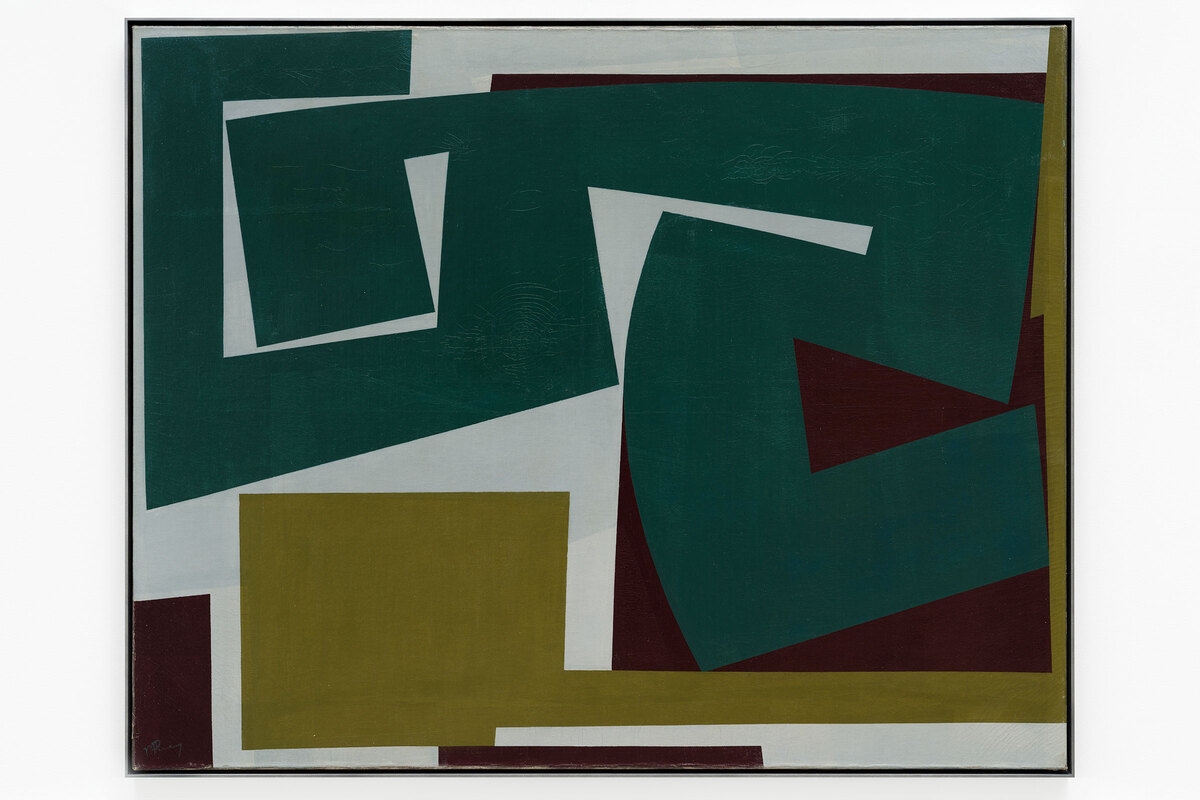 Mavis Pusey (Jamaican-born American, 1928 - 2019), Spase, 1965, oil on canvas. 42 x 52 1/2 inches. Collection of Lorenzo Legarda Leviste and Fahad Mayet. Image courtesy of Institute of Contemporary Art, Philadelphia.
Mavis Pusey (Jamaican-born American, 1928 - 2019), Spase, 1965, oil on canvas. 42 x 52 1/2 inches. Collection of Lorenzo Legarda Leviste and Fahad Mayet. Image courtesy of Institute of Contemporary Art, Philadelphia.
Artists and Galleries
Though my Philadelphia excursions began with its esteemed institutions, the real meat & bones of the trip was spent in the city’s contemporary art scene. To see the works of the artists based in Philly is to understand the creative life force behind the city’s culture.
Old City, an area ubiquitous for the city’s historic sites - the Betsy Ross House, Independence Hall, and the Liberty Bell - is a popular neighborhood that is just as much a bustling gallery district.
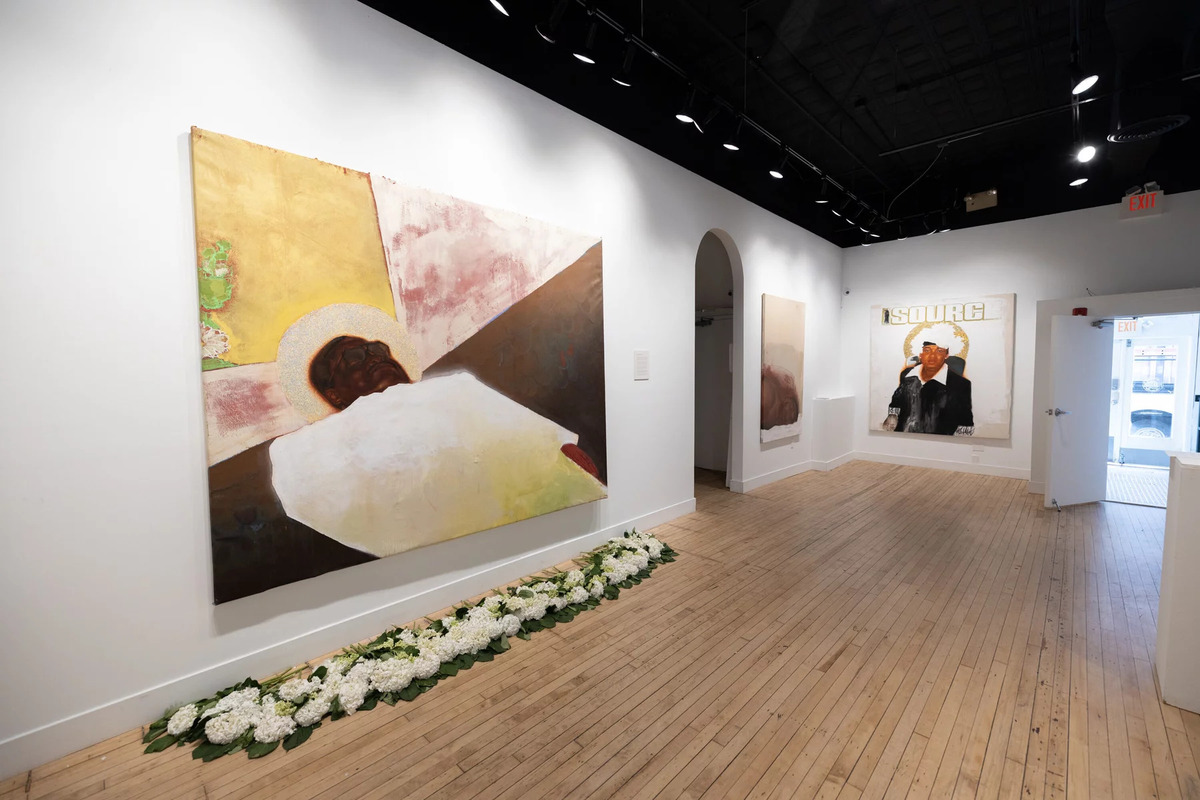 Installation view of Nazeer Sabree: The Event Phase at Paradigm Gallery + Studio (on view through November 23, 2025). Image courtesy of Paradigm Gallery.
Installation view of Nazeer Sabree: The Event Phase at Paradigm Gallery + Studio (on view through November 23, 2025). Image courtesy of Paradigm Gallery.
Paradigm Gallery + Studio is quite a remarkable space given the scale and breadth of its programming. The first two floors are dedicated to a show on Philly artist Nazeer Sabree whose massive paintings are cathartic reflections on family, grief, religion, and community through the Black lens (on view through November 23).
Further up, another floor had a yoga studio, followed by a collections space featuring works by artists represented at the gallery that are available for purchase, and a printmaking studio with state of the art facilities. I knew the gallery’s name sounded familiar as I discovered a piece by artist Charles Clary in the collections room. He was among my highlights in Art on Paper as he is known for his incised, carved-in paper works that embellish vintage VHS film covers and video game console boxes. It was incredible to have that established familiarity with some of Philly’s talent from all the way in New York!
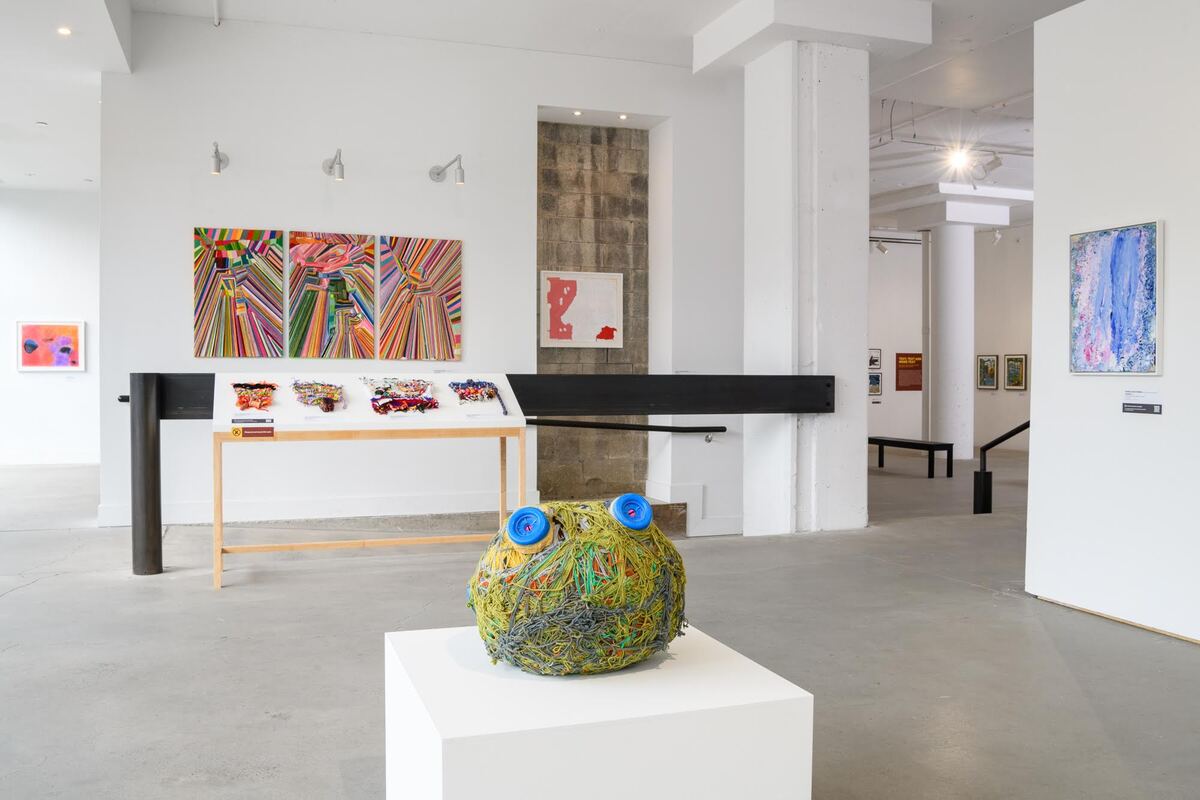 Installation view of LOOK EVERYWHERE at Atelier FAS, Philadelphia. Image courtesy of Jennifer Gilbert.
Installation view of LOOK EVERYWHERE at Atelier FAS, Philadelphia. Image courtesy of Jennifer Gilbert.
Further away on N. 31st Street, there was a wonderfully inspiring show that focused on works by artists with intellectual and developmental disabilities, LOOK EVERYWHERE. UK-based curator Jennifer Gilbert is one of the foremost curatorial advocates who is expanding opportunities for disabled artists to showcase their art in galleries, museums, and fairs; I first became acquainted with her activism at this year’s Outsider Art Fair, which left an indelible impression on me. When I found out her exhibition coincided with my visit, I set aside time to view this magnificent exhibition, which contained everything from John Behnke’s astonishing world-building illustrations (Project Onward, Chicago) and Shelly Radinsky’s humorous animal portraits (Artists First, St. Louis), to Michael Angelo Mangino’s word-based paintings (Studio Route 29, Frenchtown, New Jersey) and Charmette Young’s temptatingly tactile embroidered canvases (VaultArt Studio, Pittsburgh).
There is currently another iteration of the show at Haverford College on view through December 13, 2025.
Similar to some of the multistoried gallery & studio spaces in Chelsea, Crane Arts Building is a bustling hodgepodge of innovative galleries and studios. TILT Institute for the Contemporary Image, a photography gallery, is currently showing the hauntological photographs of multidisciplinary artist Shikeith that interrogate the socio-political implications of violence towards the black body (through November 22, 2025). InLiquid Art has a timely exhibition, The Source of Self-Regard, that examines black resilience and activism through the works of 6 native Philadelphian artists (through November 27, 2025). The artist-run Automat Collective’s since-ended Hold Fast was an intriguing conceptual and process art exhibition featuring works by recent MFA alumni from the University of Connecticut.
 Installation view of Hold Fast at Automat Collective, Crane Arts Building, Philadelphia.
Installation view of Hold Fast at Automat Collective, Crane Arts Building, Philadelphia.
The South Philly arts sector is characterized by a hardcore edginess. Building Bok, a former inner-city high school, is perhaps the most epic example of how a city can best repurpose an abandoned structure to support the local community. Bok is now a mixed-use building whose classrooms, cafeterias, offices, and gymnasiums have since been converted into artist studios, restaurants & cafes, small businesses, tattoo parlors, architecture firms, glassworks, and so much more.
Also in the vicinity of Bok are a number of Philly-based artists who contribute to the city’s thriving cultural ecosystem. John Y. Wind, an artist and jewelry designer, epitomizes the gesamtkunstwerk creative space as his artistic HQ is his studio, jewelry business, terrace sculpture garden, and residency program (the current artist-in-residence is groundbreaking sculptural fiber artist, Cait McCormack).
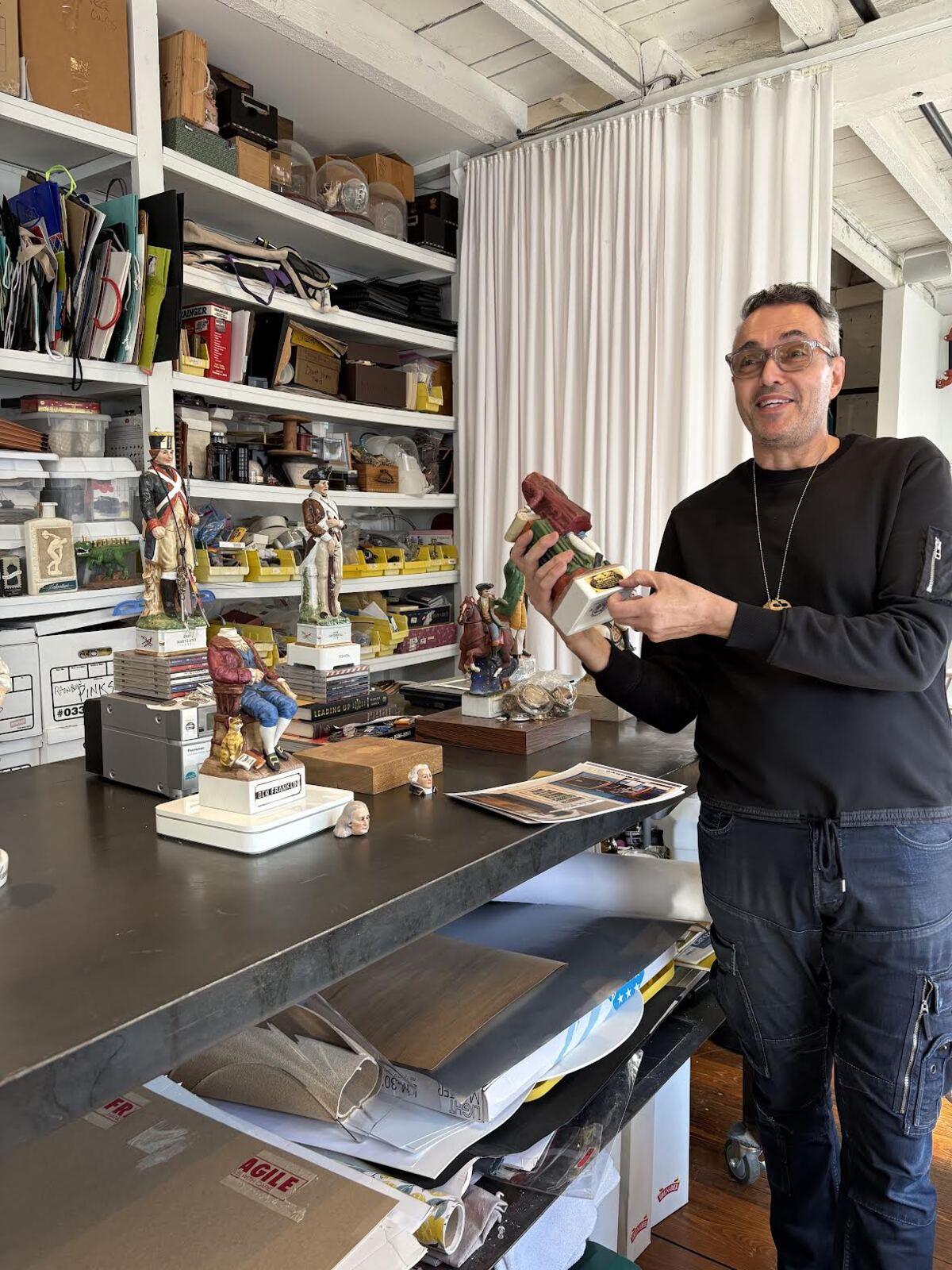 John Y. Wind presenting a few of his mixed media sculptural assemblages, some of which were included as part of an installation called Whiskey Rebellion at the Museum of the American Revolution in June 2024.
John Y. Wind presenting a few of his mixed media sculptural assemblages, some of which were included as part of an installation called Whiskey Rebellion at the Museum of the American Revolution in June 2024.
Wind also oversees the Dina Wind Art Foundation, an artist support program named after his late mother. As John affectionately described her, Dina was a sculptor whose monumental, hard-edge, metallic works evinced an electrifying energy that could easily rival that of her contemporaries Mark di Suvero, David Smith, and Robert Rauschenberg. Moreover, her abstract paintings could be placed in dialogue with that of Al Held, Clyfford Still, and Joan Mitchell. The terrace sculpture garden contains a selection of Dina’s sculptures, with additional pieces held in the collections of the Philadelphia Art Museum and Grounds for Sculpture in New Jersey.
Sebastienne Mundheim has been a pillar of the Philadelphia visual & performing arts communities since the 1990s and she specializes in puppetry. Stepping into her studio may as well have been the closest thing to entering an experimental stop-motion animated film - particularly like that of the Quay Brothers or Jan Švankmajer - as her puppet designs swarm every nook, cranny, and crevice of her home and studio. A gargantuan soaring bald eagle, cavorting youth, and 18th Century galleons are just a few examples among hundreds of expertly crafted puppets & props scattered around Mundheim’s work stations, bookcases, and furniture - a magical place where the imagination enjoys complete freedom.
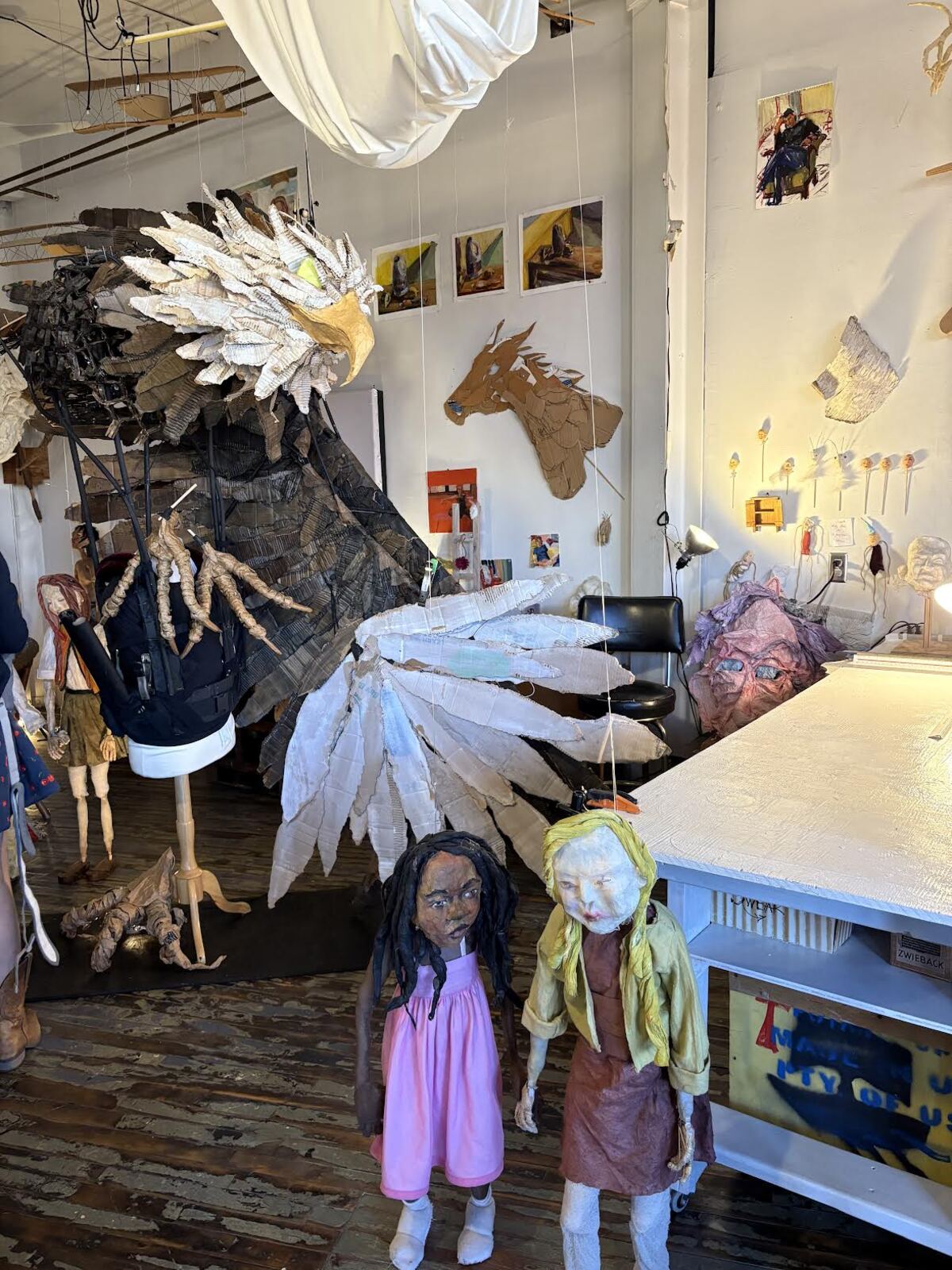 A glimpse into the motley puppet designs of Sebastienne Mundheim in her home & studio in South Philly.
A glimpse into the motley puppet designs of Sebastienne Mundheim in her home & studio in South Philly.
The Future of Art in Philadelphia
2026 is just around the corner, and that year will mark a major anniversary: the semiquincentennial (250th) anniversary of the birth of the United States. The signing of the Declaration of Independence took place in Philadelphia, which is precisely what makes the site specificity of this auspicious moment all the more remarkable. Thus, museums and other arts organizations have been strategizing how to incorporate the visual arts into this milestone.
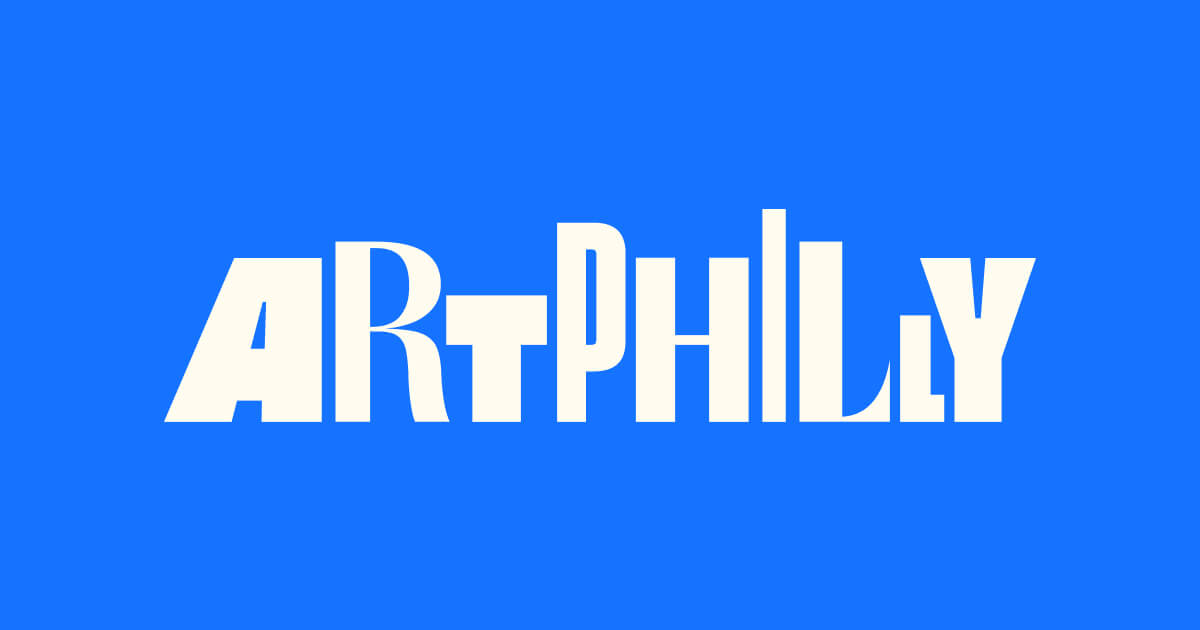 The official logo for ArtPhilly (Launching in Summer 2026)
The official logo for ArtPhilly (Launching in Summer 2026)
A new recurring festival will come to fruition in Summer 2026. Enter ArtPhilly, a citywide series of art programs extending from late-May through Fourth of July weekend as a celebration of Philadelphia’s booming art scene. ArtPhilly’s memorable slogan of “Causing a scene since 1776” already sets the tone for a smash-hit of an emergent festival comprising over 70 programs. Spearheaded by native Philadelphians and veteran arts professionals Bill Adair and Kathy Sachs, ArtPhilly will encompass a wide range of activities that include the full sweep of creative expression: Visual Arts, Dance, Food, Poetry, Film, Theater, Music, Education, and much more. I will most certainly make it a point to return for these events next Summer!
A separate creative venture that is slated for Spring 2027 is the Forman Arts Initiative, an organization that is converting an entire block of city property into a robust multipurpose arts space in the Norris Square neighborhood. Co-founded by Michael Forman and Jennifer Rice, this is the perfect example of an intrinsically Philadelphian-rooted long-term project solely for the benefit of the city. Community lies at the heart of this initiative as Forman and Rice are actively planning an entire range of programming, from art exhibitions and live performances, to fashion showcases and lecture series.
Furthermore, they are devoting an entire section of the property to a fully-functioning arts research library. And just what is the source of the library’s inventory? The 60,000+ collection of the former University of the Arts library, which was successfully acquired by Forman and Rice at auction. They are presently working on the archival practices to implement for its eventual launch. Contemporary art superstar Alex Da Corte, an alumni of the university, cried tears of joy upon seeing the salvaged collection as these were the very books that inspired his resolve to become an artist.
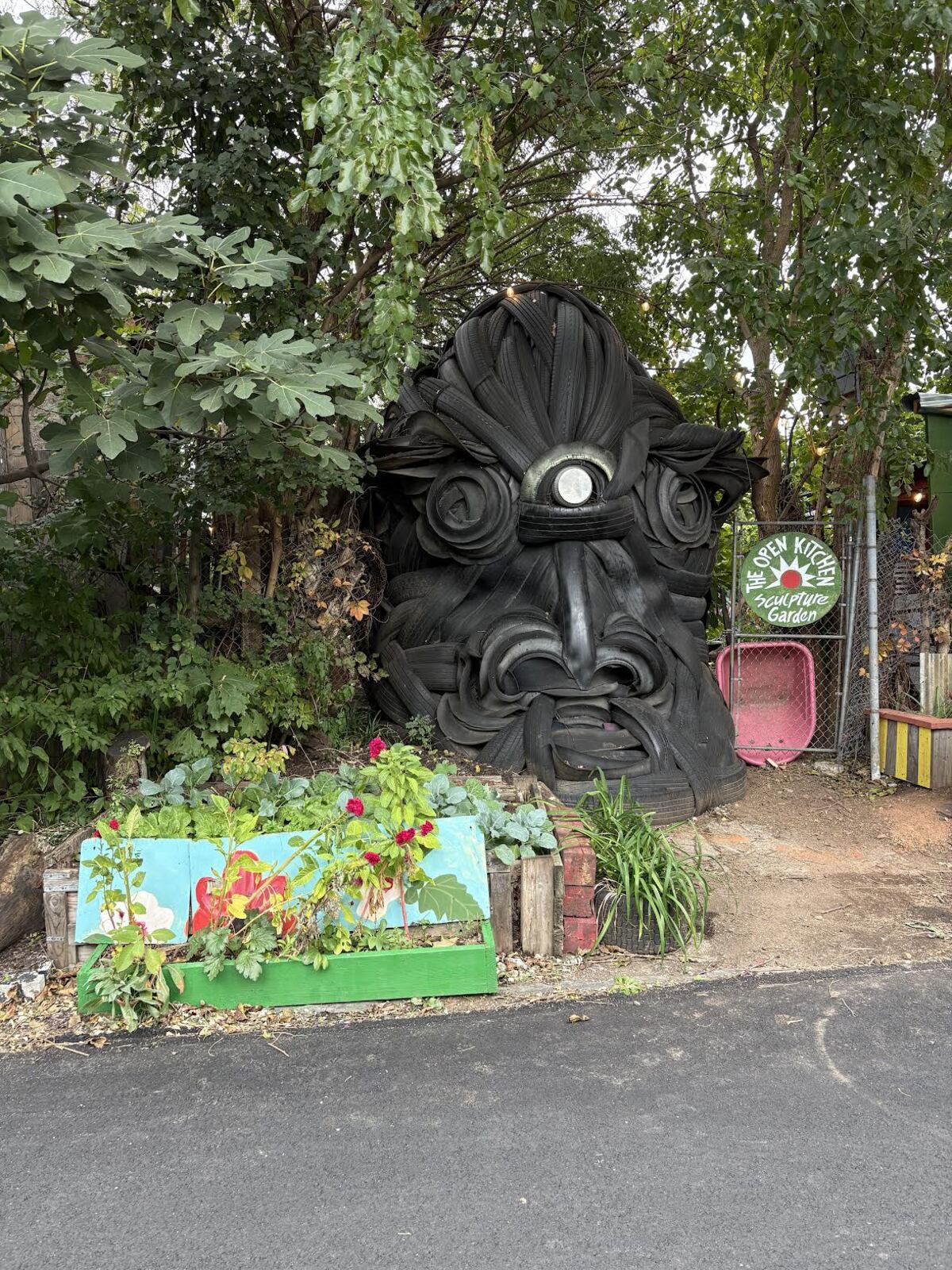 Exterior view of The Open Kitchen Sculpture Garden.
Exterior view of The Open Kitchen Sculpture Garden.
Directly opposite the property is an off-the-beaten-path gem that will undoubtedly collaborate with the Forman Arts Initiative: The Open Kitchen Sculpture Garden. Art and cuisine go hand-in-hand as this site functions as a community garden, picnic area, and site-specific art zone complete with an art residency program (akin to the Governor’s Island residencies in New York). The entire space is inundated with a sprawling tapestry of sculptures, much of which being made from found objects as eco-sustainability is one of the Kitchen’s core values. Not even a hop, skip, and a jump away from the Forman campus, there will most definitely be a cross-pollination of activities between these organizations.
Conclusion
My written revisitation of each and every art excursion from this three-day trip only captures a small portion of a humongous art scene that will only continue to expand. Visit Philly’s curation of an astounding litany of people, places, and events was a truly rich experience that accomplished so much. It captured the duality of Philadelphia’s institutional and neighborhood-rooted cultural spheres, often working hand-in-hand. I came away with a comprehensive knowledge of Philadelphia’s art scene in the tripartite understanding of its past, present, and future. Though smaller in geographic area than New York, make no mistake that Philadelphia is one of the most essential cultural capitals of the mid-Atlantic region - and it’s only going to get better. WM










